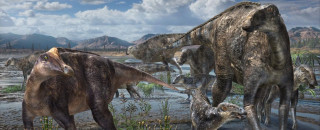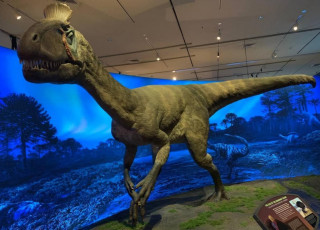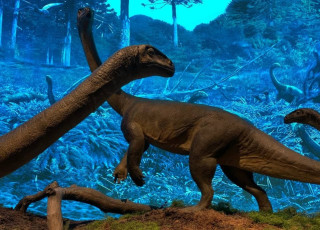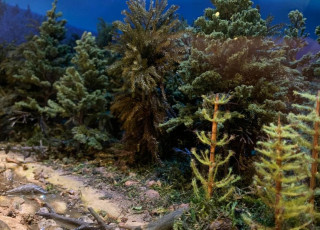Polar DinoFest: Ron Tykoski
By Riley Black
Who would've thought that the North Slope of Alaska would be a dinosaur hot spot?
More often than not, our most cherished images of dinosaurs come from places like Alberta, Patagonia, and even right here in Utah, images of endless Mesozoic summers where scaly and feathery dinosaurs thrived. But over the past several decades, paleontologists have uncovered an entire menagerie of dinosaurs that lived within the Arctic Circle and thrived in habitats characterized by cooler temperatures and months of darkness.
Perot Museum of Nature and Science paleontologist Ron Tykoski is one of the experts unraveling the secrets of Alaska's Cretaceous dinosaurs. In rocks dating to about 70 million years ago, experts have found duckbilled dinosaurs, raptor-like dinosaurs, ankylosaurs, and horned dinosaurs that remained in this polar habitat year round. "They lived in an incredibly odd environment, one with no modern analog," Tykoski says.
Some of the dinosaurs found on the North Slope have been found elsewhere. Edmontosaurus is a familiar, shovel-beaked dinosaur that lived within the Artctic Circle, as well as places like Alberta and Montana, around 70 million years ago. But some are not found anywhere else. Pachyrhinosaurus perotorum is a recently-named horned dinosaur species from the North Slope with a big, knobby lump of keratin-covered bone on its nose. Nanuqsaurus, too, is a relatively new find - a small tyrannosaur that stalked the forests of ancient Alaska.
And there are still mysteries to uncover. The most common carnivorous dinosaurs in North Slope deposits are troodontids - slender cousins of dinosaurs like Velociraptor that were covered in feathers and had killing claws on each foot. "It's an odd situation happening here," Tykoski says, because large troodontid teeth are abundant on the North Slope but no one has yet uncovered a troodontid skeleton in these deposits. There were obviously a lot of them, and, based on related fossils, troodontids likely had big eyes that gave them an edge during months or darkness, but experts are still digging away to see how these Alaskan troodontids compare to those found elsewhere. There is still so much left to find.
Click Here to Explore More of NHMU's Polar DinoFest
Riley Black is the author of Skeleton Keys, My Beloved Brontosaurus, Prehistoric Predators, and a science writer for the Natural History Museum of Utah, a part of the University of Utah in Salt Lake City. Our mission is to illuminate the natural world and the place of humans within it. In addition to housing outstanding exhibits for the public, NHMU is a research museum. Learn more.



